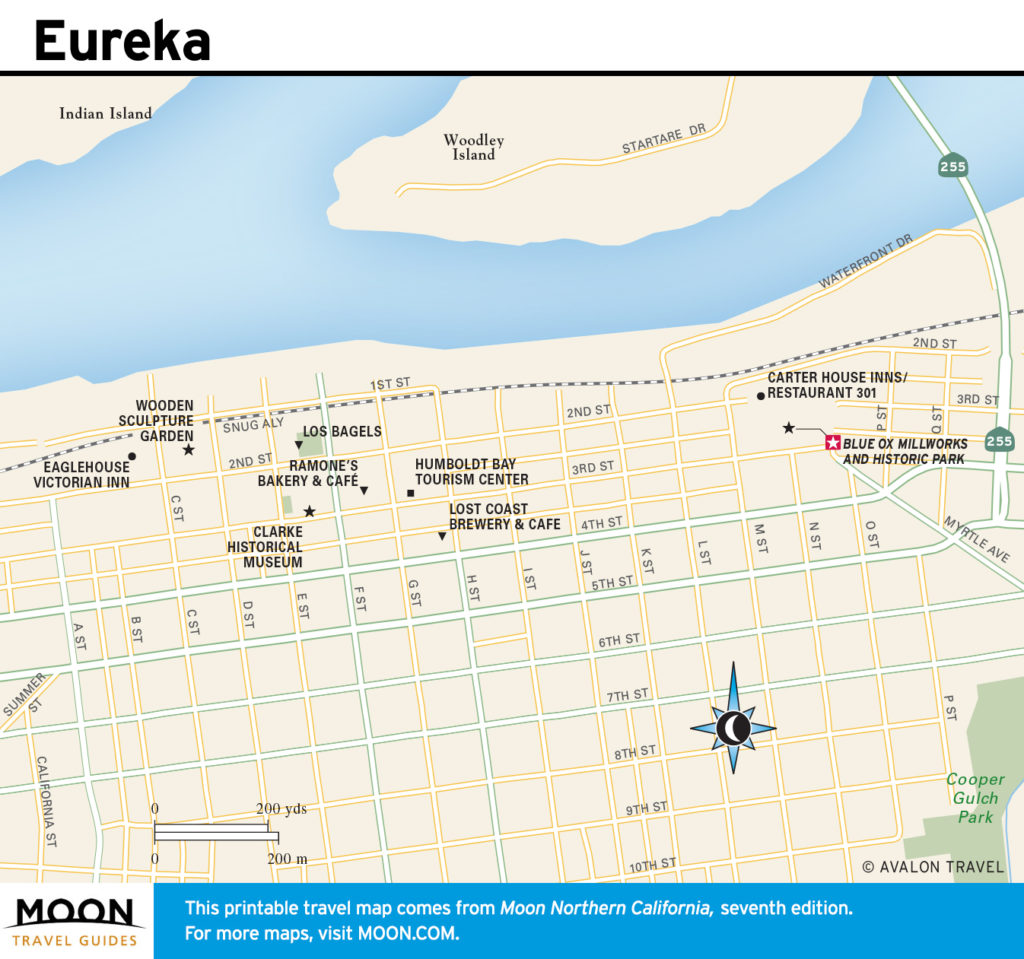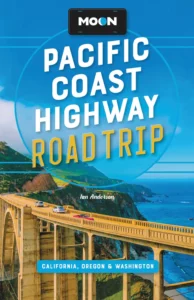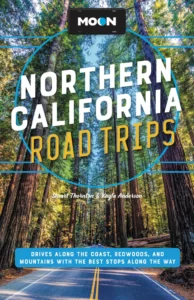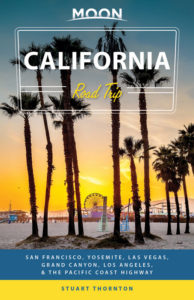Arcata and Eureka
Arcata
The most attractive and enjoyable town on the far north coast of California, Arcata (pop. 18,257) makes the best first (or last, depending upon the direction you’re traveling) overnight stop south of the Oregon border. The presence of Humboldt State University’s campus on the hills above US-101 accounts for the town’s youthful, nonconformist energy. Cafés, bookstores, bars, and crafts shops surround the lively Arcata Plaza, two blocks west of US-101 at 9th and G Streets, incongruously graced by palm trees and a statue of President McKinley. The Utne Reader once rated Arcata as the most enlightened town in California. Spending even a little time in this vibrant, cooperative Ecotopia may make you wonder whether or not you really do have to race back to the big-city 9-to-5 grind.
You can admire the town’s many elaborate Victorian-era cottages, hunt wild mushrooms, clamber over sand dunes, or hike in the redwoods. Afterward, relax with a cup of tea or, better yet, a soak in a hot tub at homey Café Mokka (495 J St., 707/822-2228), the coast’s only combo sauna and espresso bar. Just off the plaza, Jambalaya Arcata (915 H St., 707/822-4766) is a nightclub serving burgers, pizza, microbrew beers, and, of course, jambalaya. More good food, good beer, and good live music are on the menu at the popular “HumBrews,” a.k.a. the Humboldt Brews (856 10th St., 707/826-2739). For a complete selection of foodstuffs and supplies, and more insight into the local community, head to the large and stylish North Coast Co-op (811 I St.), a block north of the plaza.
For a place to stay, the centrally located Hotel Arcata (708 9th St., 707/826-0217 or 800/344-1221, $95 and up) is right on the plaza, or you can take your pick of the usual motels along US-101.
Eureka
Evolving into a lively artists’ colony from its roots as a fairly gritty and industrial port, Eureka (pop. 26,998) was well known to fur trappers and traders long before it became a booming lumber and whaling port in the 1850s. Thanks to the lumber trade, Victorian Eureka grew prosperous, building elaborate homes, including the oft-photographed but closed to the public Carson Mansion along the waterfront at 2nd and M Streets, two blocks west of US-101.
One unique thing to see in Eureka is the Romano Gabriel Sculpture Garden (315 2nd St.), displayed in a plate-glass showcase. This brilliantly colorful folk-art extravaganza of faces and flowers originally stood in the front yard of local gardener Romano Gabriel, who made them out of discarded packing crates and other recycled materials over a period of some 30 years before his death in 1977.
Along with dozens of well-preserved Victorian houses, Eureka has done a fine job of finding new uses for its many ornate commercial buildings, most of which have been preserved to house art galleries, cafés, and restaurants in what’s now called Old Town, a half dozen blocks between the waterfront and US-101. This historic downtown quarter has a huge number of good places to eat and drink, including Ramone’s Bakery & Café (209 E St., 707/445-2923) and the pub-like Café Waterfront (102 F St., 707/443-9190), serving excellent fish ’n’ chips, chowders, and other fresh seafood right on the harbor. And if that’s not enough to sate your appetite, for yet more fish ’n’ chips and a pint or two of ale, head along to the Lost Coast Brewery (1600 Sunset Dr., 707/267-9651).
Accommodation options range from roadside motels to upscale places like the Carter House Inns & Restaurant 301 (301 L St., 707/444-8062 or 800/404-1390, $195 and up), a recreated Victorian manor with spacious rooms and a big breakfast in the morning.
Eureka Travel Map

Samoa
Even if you’re just passing through, don’t miss the chance to visit the old mill town of Samoa, across the bay from Eureka but easily reachable via the Hwy-255 bridge. On a narrow peninsula between the bay and the open ocean, the unique Samoa Cookhouse (707/442-1659, daily breakfast, lunch, and dinner) was built in 1890 to feed the many hungry men living and working in the “company town” lumber mill here. The mill is long gone now, but the cookhouse remains in operation as a sort of living history center, packed with logging memorabilia and blue-collar character. So take a seat at one of the long redwood tables, covered in checkered oilcloth, soak up the history, and dig into the family-style feasts (all-you-can-eat!). There are no menus, just huge platters of food at reasonable prices.
Northern California Travel Map

















